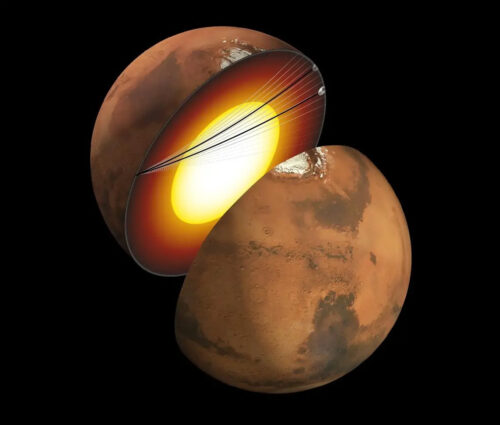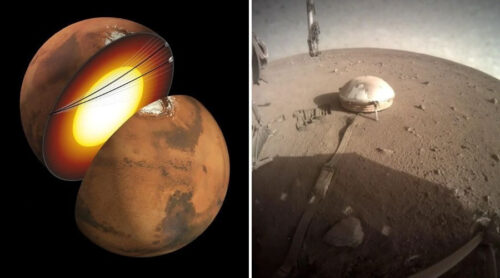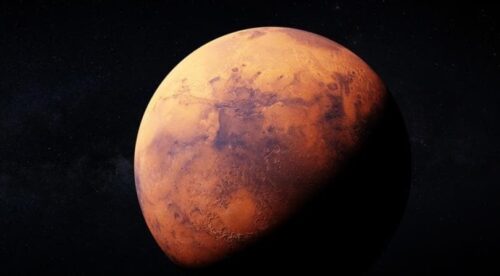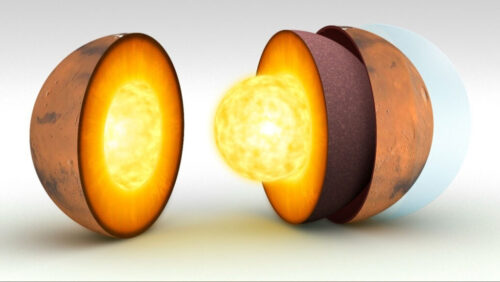
A recent groundbreaking study led by the University of Bristol has shed light on the enigmatic liquid core at the center of Mars, revolutionizing our understanding of the planet’s formation and evolution. This research, published in the Proceedings of the National Academy of Sciences of the US, marks a significant milestone as it provides the first-ever detections of seismic waves traveling through the Martian core.
Understanding the composition and characteristics of Mars’ core is crucial in unraveling the mysteries of how the planet formed and evolved over time. By measuring acoustic energy in the form of seismic waves, scientists have discovered that the liquid core of Mars is both denser and smaller than previously believed. Additionally, it contains a mixture of iron and several other elements.
Unraveling the Secrets of Mars’ Core
To delve into the depths of Mars’ core, researchers relied on the seismic data collected by the NASA InSight Mars lander. Originally planned for a short mission of just over one Mars year (equivalent to two Earth years), the InSight lander was extended due to unforeseen circumstances, including dust accumulation and power reduction caused by Martian storms. This extension allowed for the continuous gathering of geophysical data, including seismic signals from Marsquakes, until the end of last year.

Seismic waves, or sound waves, travel through different layers of a planet, providing valuable information about its internal structure. By analyzing these waves, researchers were able to probe the Martian core and gain insights into its properties. The newfound knowledge reveals that Mars’ liquid core is slightly denser and smaller than previously thought, challenging previous assumptions.
The core’s composition, discovered to be a mixture of iron and other elements, raises intriguing questions about Mars’ formation and evolution. Scientists believe that studying the core’s composition can provide clues about the planet’s early history and the processes that shaped its present state. The presence of various elements in the core offers insights into the dynamics of Mars’ geological activity and how it differs from Earth.
Implications for Mars’ Formation and Evolution
The information gathered from this study has far-reaching implications for our understanding of Mars’ formation and evolution. By obtaining a more accurate measurement of the core’s density and size, scientists can refine existing models and theories about how Mars formed billions of years ago.

Comparing Mars’ core to Earth’s core also yields valuable insights into the divergent evolutionary paths of these two planets. Although both planets have a core composed mainly of iron, the presence of additional elements in Mars’ core suggests fundamental differences in their geological and thermal histories. Understanding these differences can provide a glimpse into the unique factors that shaped Mars’ geological landscape.
Moreover, the detection and analysis of seismic waves on Mars open up new avenues for future exploration and research. By expanding our understanding of the Martian core, scientists can refine our knowledge of the planet’s internal processes, including mantle convection and plate tectonics, if they exist. These findings lay the groundwork for future missions and studies aimed at unlocking the secrets of Mars’ past and potential for hosting life.
The recent study led by the University of Bristol, which unveiled new insights into the liquid core of Mars, has significantly advanced our understanding of the Red Planet’s formation and evolution. Through the detection of seismic waves, scientists have discovered that Mars’ core is denser, smaller, and comprises a mix of iron and other elements.

The implications of these findings extend beyond the core itself, providing crucial information about Mars’ geological history and processes. By comparing Mars to Earth, scientists can identify the distinct factors that have influenced the two planets’ development, shedding light on the divergent paths they have taken.
As we continue to explore Mars and uncover its mysteries, this study paves the way for future missions and research endeavors. Further investigations into the Martian core and its composition will deepen our understanding of the planet’s past, its potential for hosting life, and the broader processes that shape terrestrial planets in our solar system.
References:
- University of Bristol. “New insights into Mars’ liquid core.” ScienceDaily, ScienceDaily, 2 July 2023.
- NASA. “NASA’s InSight Mars Lander Extended for Two More Years.” NASA, NASA, 20 Dec. 2022.
